This post may contain affiliate links. For more information, please see our affiliate policy.
For a small Thanksgiving menu or a Sunday dinner, try my best Roasted Turkey Breast recipe. A dry brine and basting yields craveably crisp skin, and the meat itself is juicy and flavorful. Learn how to brine, roast, and a turkey breast.
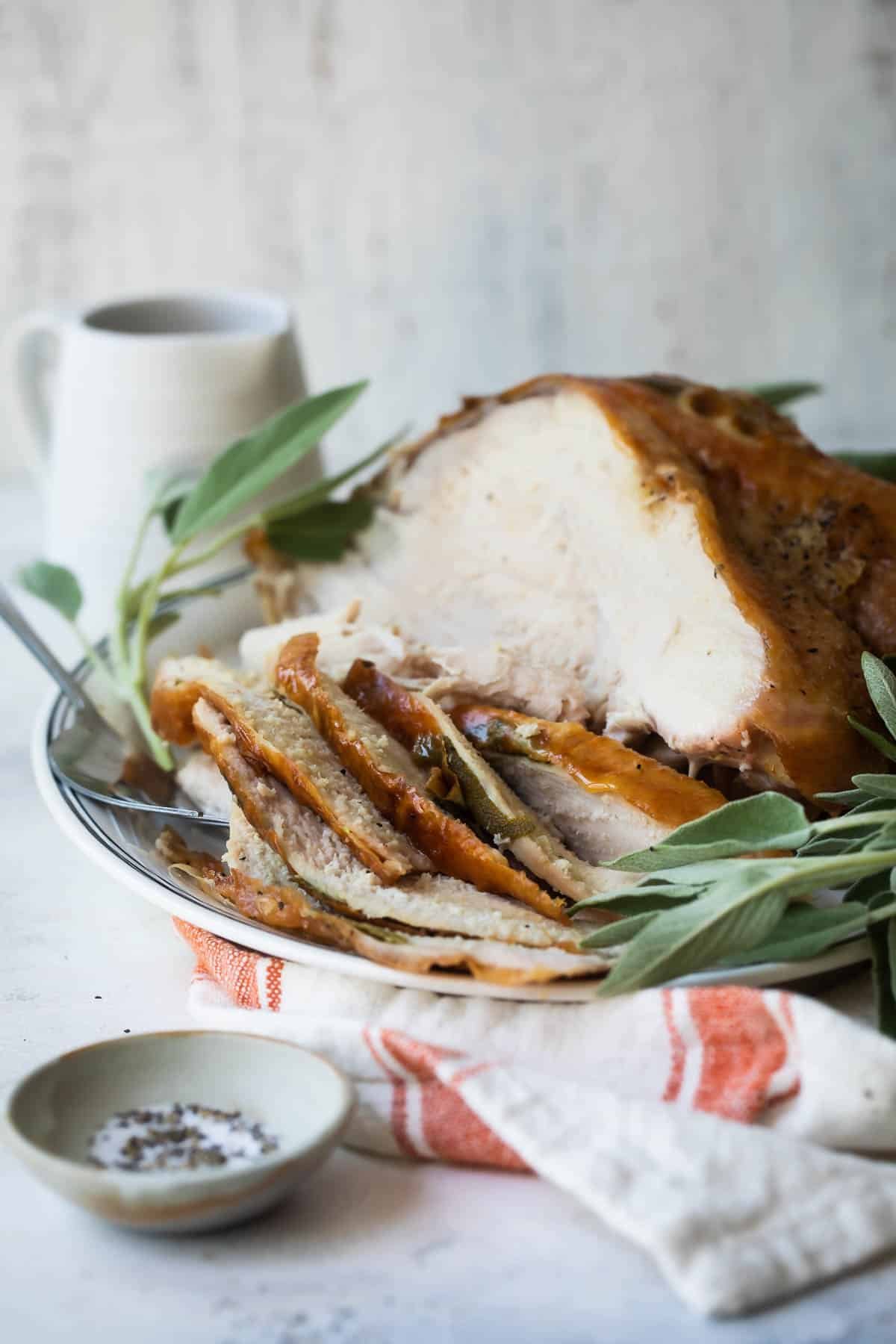
While I still swear by my Perfect Roast Turkey for my typical Thanksgiving menu and occasionally my Christmas menu, too, I don’t always need enough to feed 12 (and know you don’t either!).
So I scaled down that concept into turkey breast form, which makes this a terrific Sunday dinner idea or centerpiece as part of a small holiday gathering.
Wondering how to roast turkey breast that would make Ina Garten proud (and make everyone beg for your secrets)? It comes down to three crucial details:
- Dry brining. This is key for crispy skin and takes next-to-no effort.
- Sage butter. Rub butter and place leaves of fresh sage between the skin and the flesh of the bird to infuse so much flavor.
- A splash of water. Add this to the bottom of the roasting pan so nothing scorches as the turkey roasts and the drippings fall to the bottom of the vessel.
- Frequent basting. Every 30 minutes, brush the turkey breast skin with a mixture of melted butter and oil. Along with the dry brine, this makes the best turkey skin texture.
Ahead, is your complete turkey roasting guide for the next time you want to serve Roasted Turkey Breast. If you’re like me, it will be every Sunday after you take one bite of this succulent, sage-scented turkey.
Table of Contents
Recipe ingredients
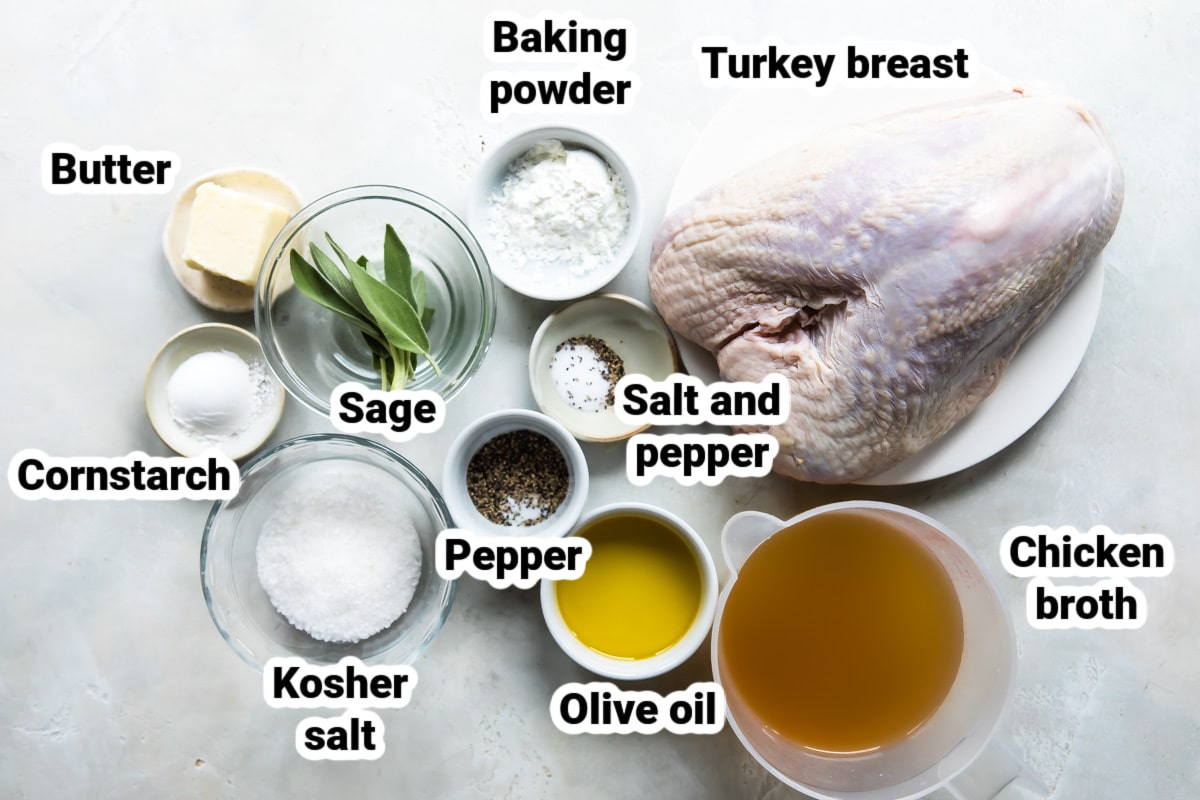
At a Glance: Here is a quick snapshot of what ingredients are in this recipe.
Please see the recipe card below for specific quantities.
Ingredient notes
- Bone-in whole turkey breast: Look for a turkey breast with the words “no salt added” on the label. The best (and safest) way to thaw a frozen turkey breast is slowly in the refrigerator over the course of several days (about 2 days for a 7-pound turkey). Never thaw a turkey using warm or hot water, in the microwave, or at room temperature; all of these methods may let bacteria grow before the turkey is thawed.
- Kosher salt: Used for dry-brining (aka pre-salting). The salt draws out the extra moisture in the turkey, forms a salt solution on the outer layer of the bird, and is then reabsorbed back into the meat to season it. For a wet-brine recipe, see my post on how to brine a turkey. Don’t substitute standard table salt for the Kosher salt because it’s much finer and tastes much saltier.
- Baking powder: Just like you might remember from my Baked Buffalo Wings recipe, I call for sprinkling the poultry’s skin with baking powder before roasting. This pantry staple dries out the outer layer of the turkey breast resulting in delightfully crispy skin.
Step by step instructions
To dry-brine the turkey breast:
- Set turkey breast on a rack set over a rimmed baking sheet. Remove any excess fat or pin feathers and pat dry with paper towels. In a small bowl, add kosher salt and baking powder and stir to combine. Sprinkle the salt mixture over the breast. Coat well, stopping before a crust forms (you may not need all of the salt mixture).
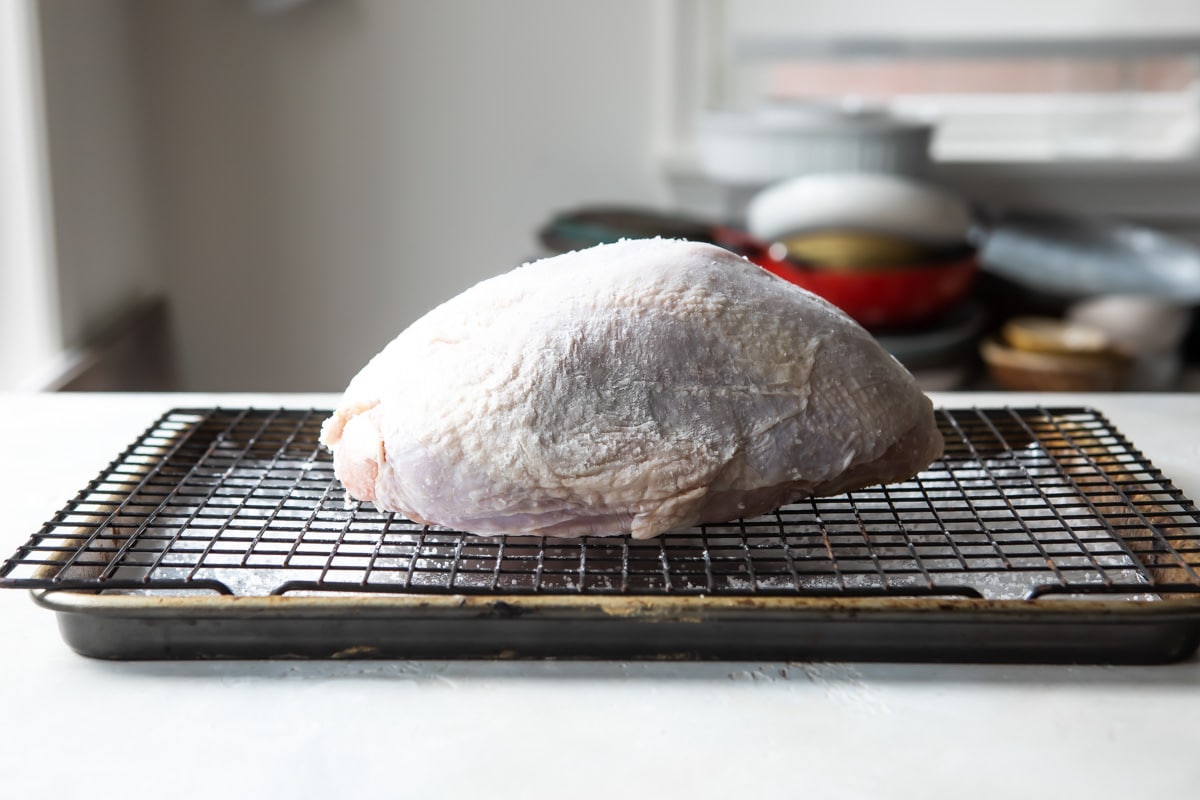
- Refrigerate, uncovered, for 12 to 24 hours (or loosely cover and refrigerate for up to 3 days). Remove the turkey breast from the refrigerator and let sit at room temperature 1 hour prior to roasting.
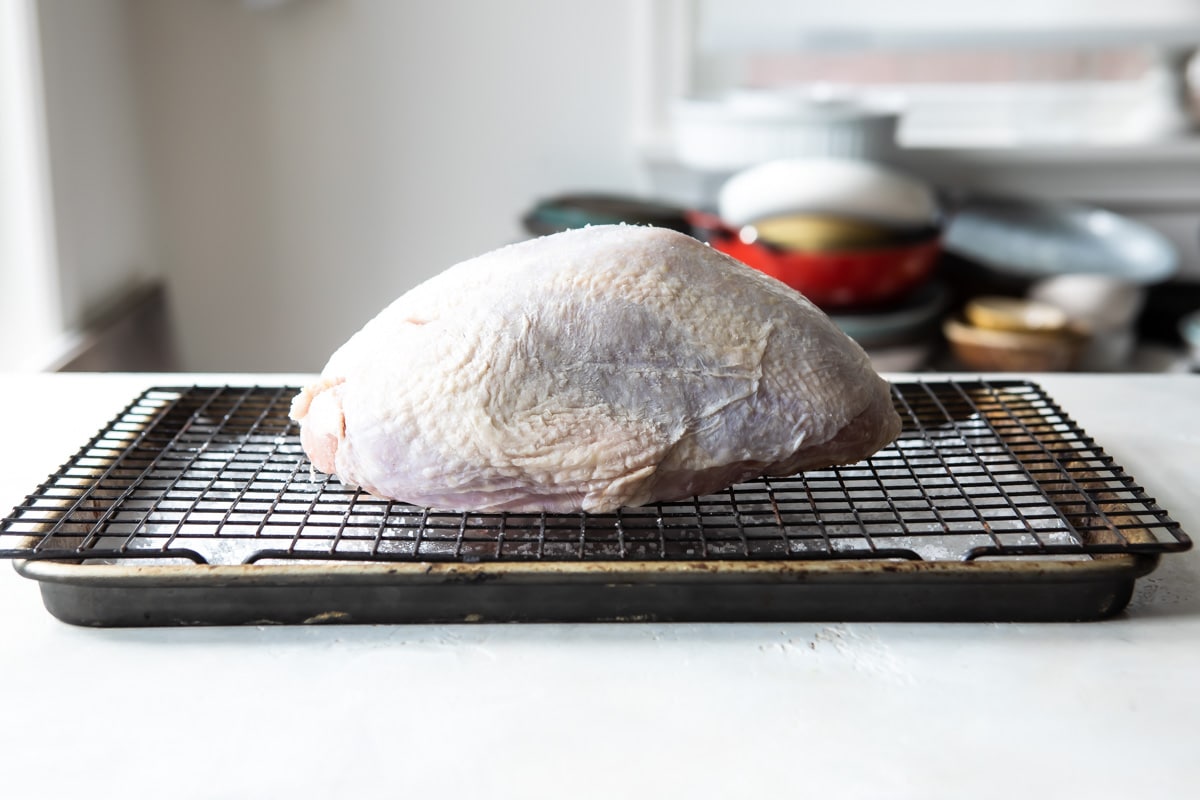
To roast the turkey breast:
- Adjust an oven rack to the lower third position and preheat oven to 425 degrees. In a small bowl, stir together the melted butter and olive oil and set aside for basting. Using paper towels, dry the turkey breast. Gently slide your fingers between the skin and the breast of the turkey to loosen the skin. Spread 1 tablespoon of the softened butter between the breast and the skin.
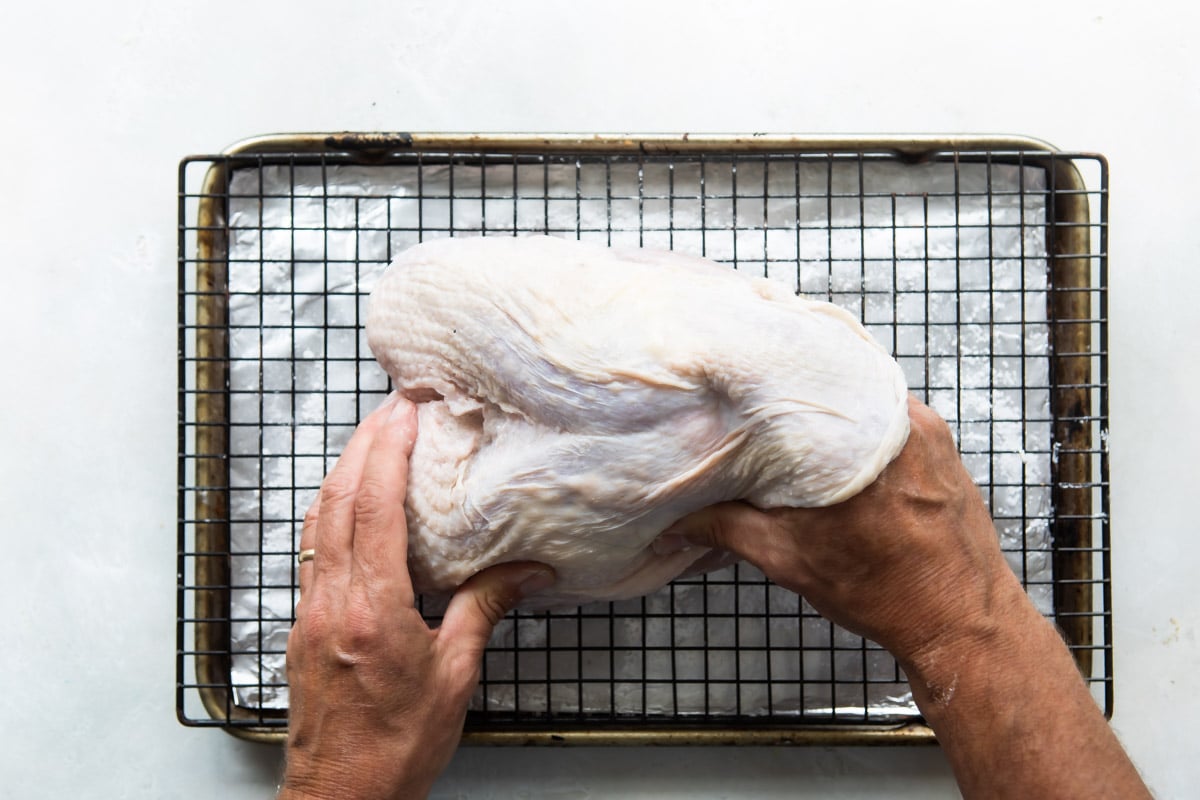
- Arrange six sage leaves evenly between the skin and the breast. Rub the remaining 1 tablespoon softened butter all over and season with black pepper. Place in a roasting pan breast-side up. Pour 1 inch of water into the bottom of the roasting pan. Lower the oven temperature to 325 degrees.
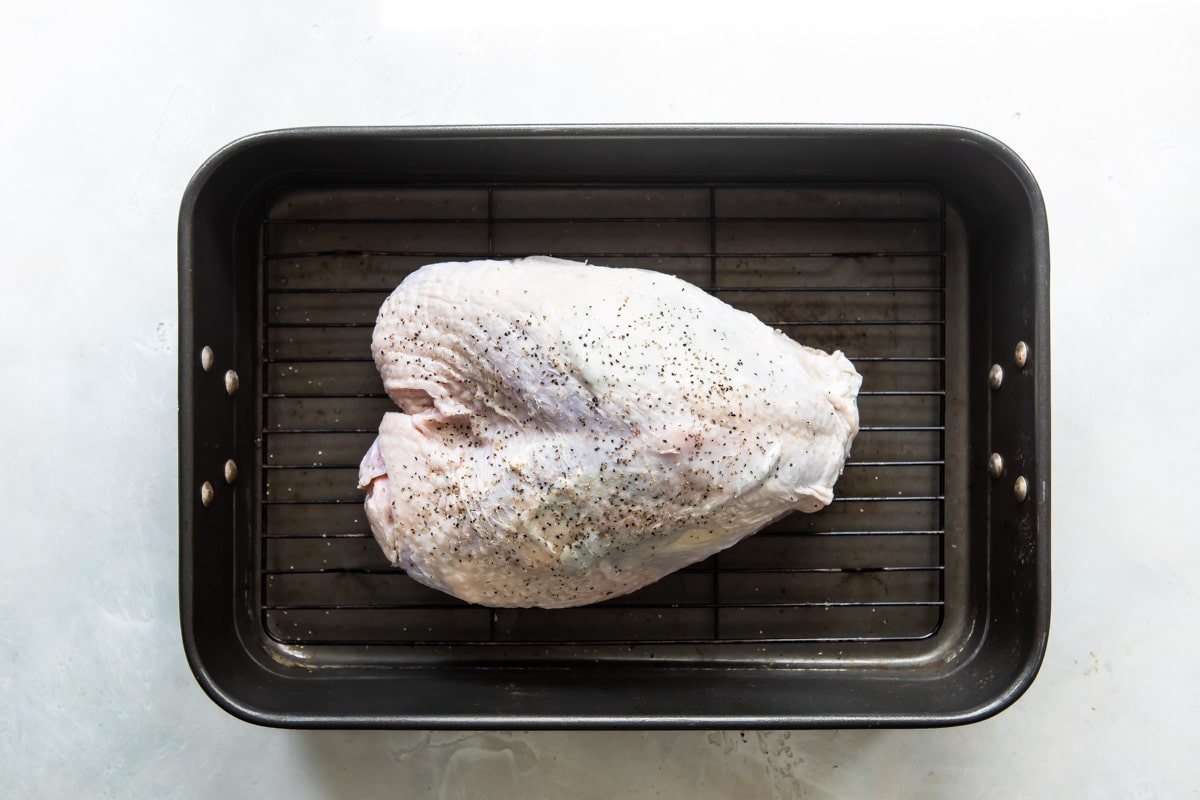
- Roast the turkey breast for 2 to 3 hours, basting every 30 minutes with the butter and oil mixture. Add additional water to the pan as needed. Begin testing for doneness after 2 hours. A thermometer inserted into the thickest part of the breast should reach 165 degrees, and the juices should run clear.
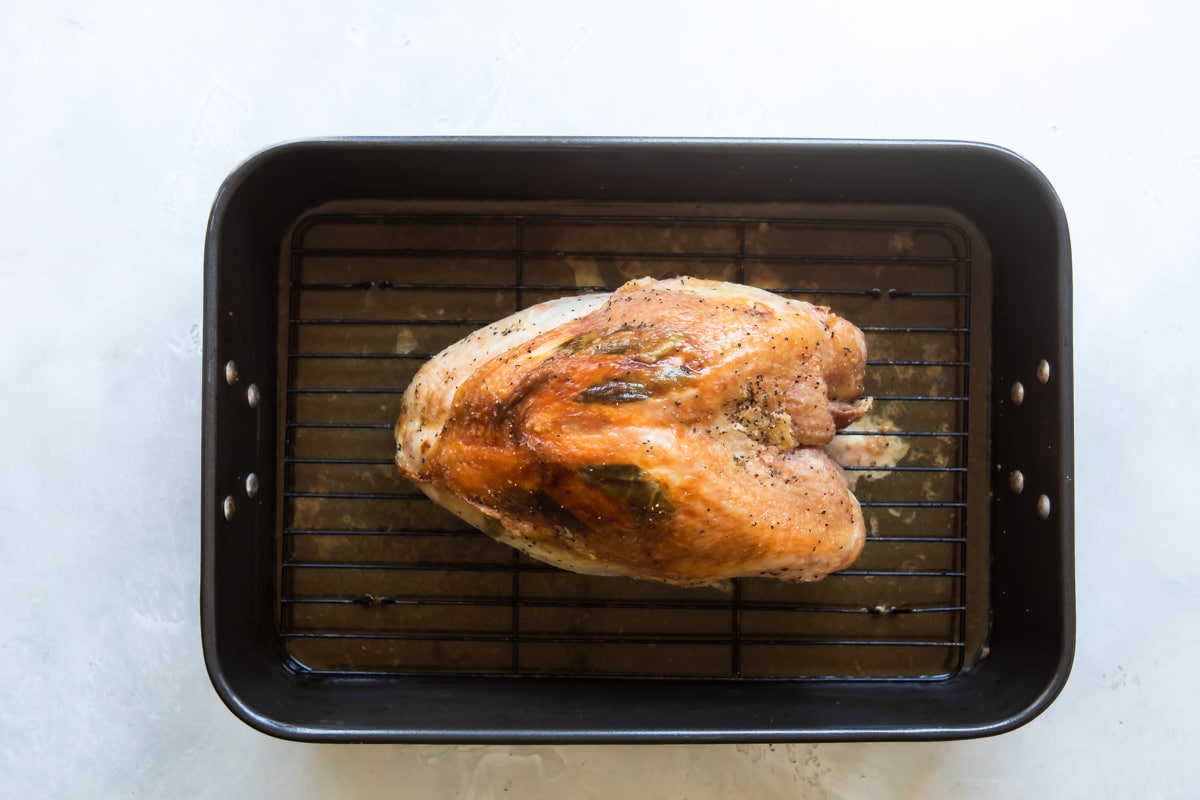
- Transfer the turkey breast to the carving board, tent with aluminum foil, and allow to rest for 30 minutes.
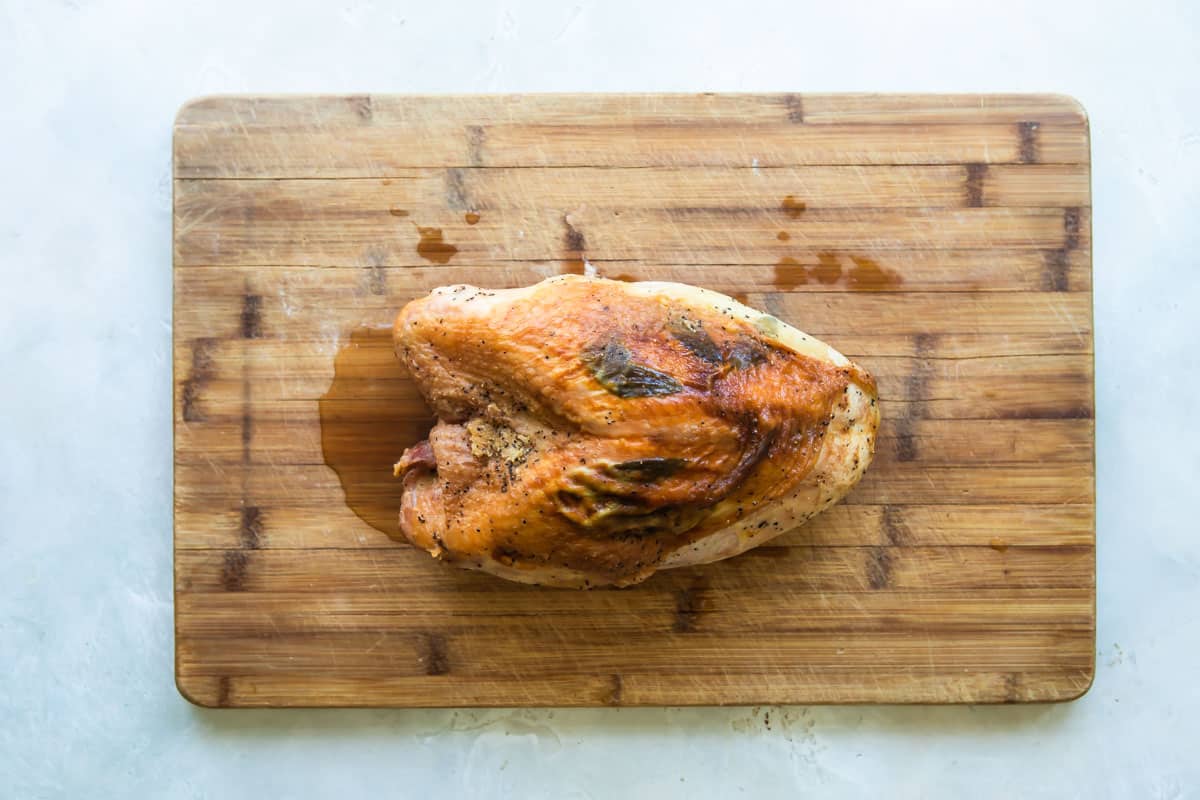
To carve and serve the turkey breast:
- Place turkey breast on the cutting board and slice the breast meat at an angle.
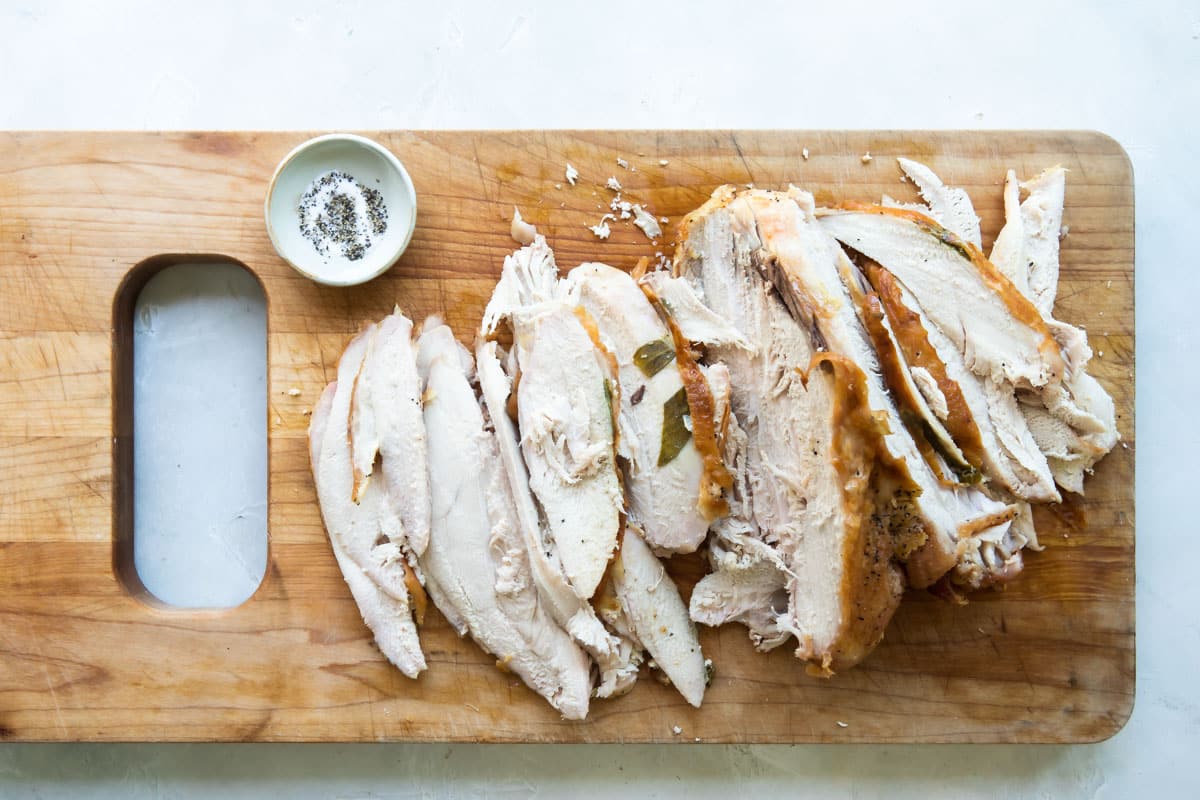
- Arrange the slices on a serving platter and pass the gravy separately.
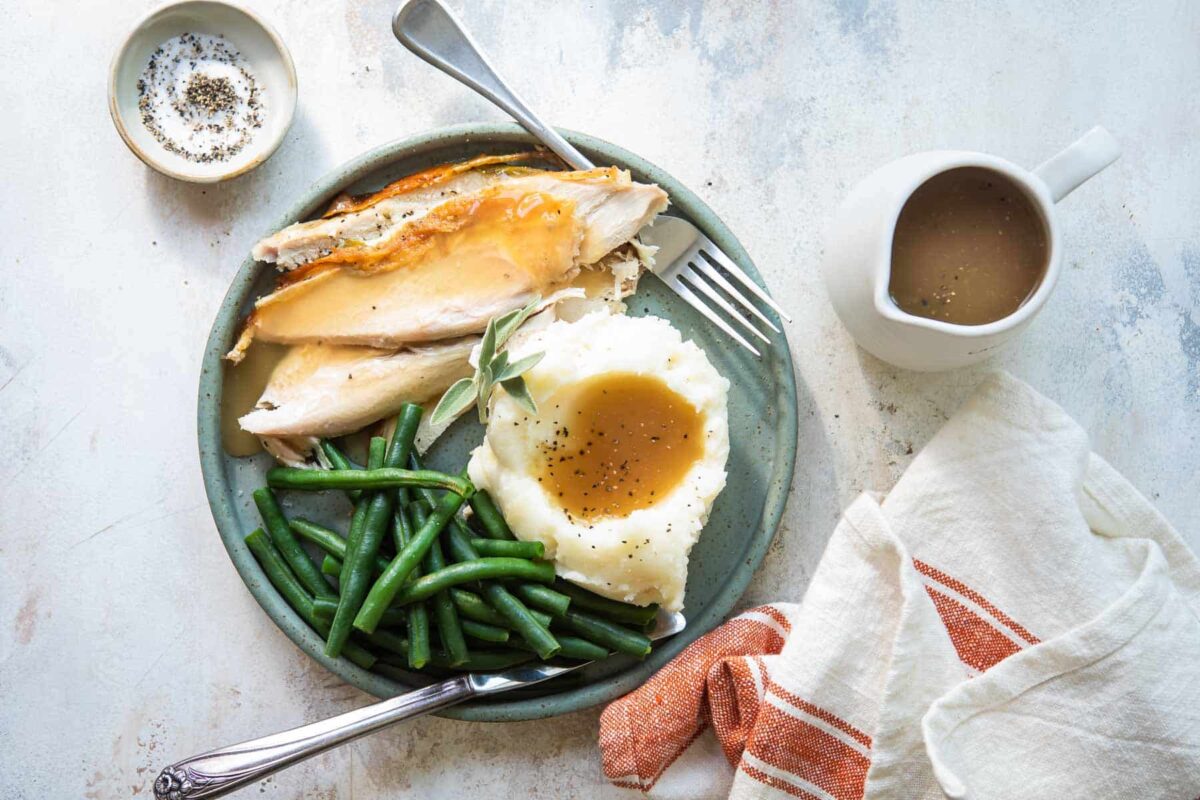
Recipe tips and variations
- Yield: My Roasted Turkey Breast recipe is designed to feature a 7-pound bird that will feed about 6 people (about 1 ½ cups turkey per person or 9 cups total). Scale up or down as desired to accommodate your group size and interest in leftovers.
- Storage: Transfer extra carved Roasted Turkey Breast to an airtight container and refrigerate for up to 4 days.
- Make ahead: Get a jump start on your Thanksgiving prep (or Sunday dinner prep) with my easy Make Ahead Turkey recipe. Roast, carve and freeze the turkey in its juices.
- Freezer: Carve the turkey breast and place in shallow freezer containers. Pour cooking juices over turkey then let cool slightly, about one hour. Cover and freeze up to 3 months.
- Ultimate Turkey Guide: Cook your best Thanksgiving menu (or Sunday dinner) ever. Brush up on how to buy, thaw, brine, and cook a turkey, plus learn how easy it is to make turkey broth from bones and turkey gravy from pan drippings.
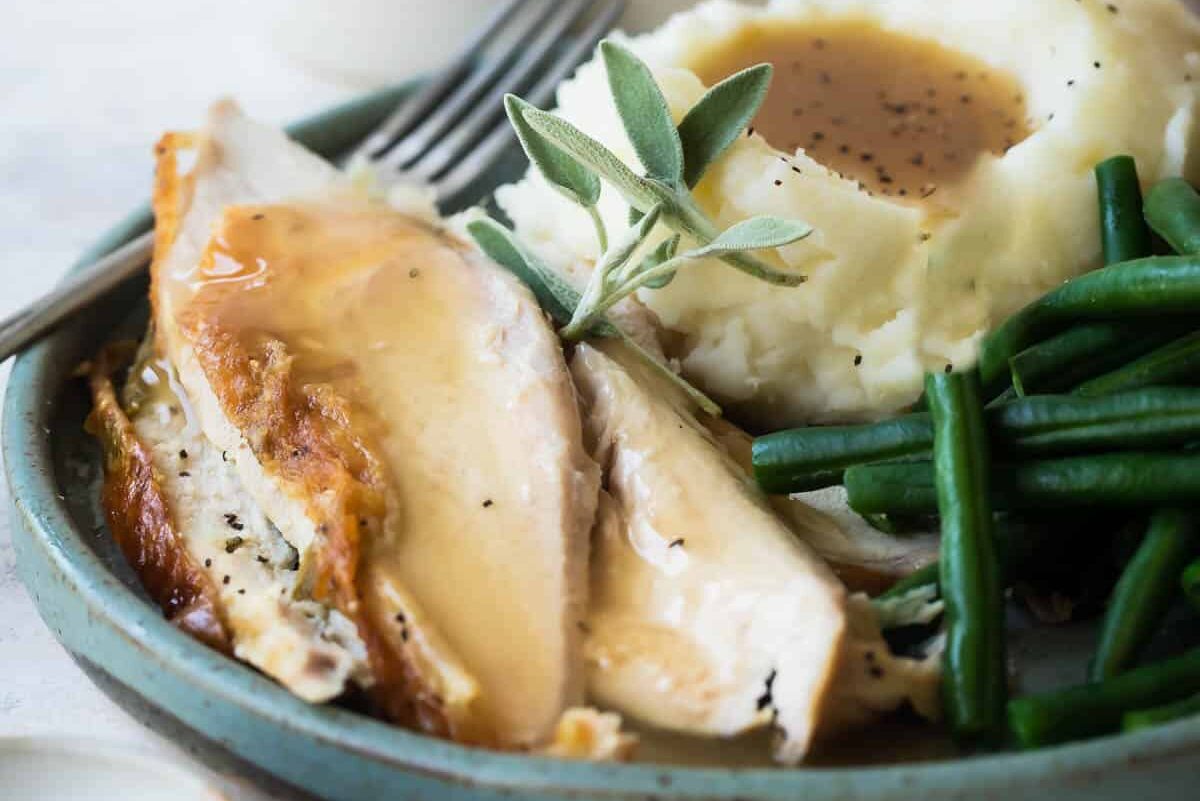
Frequently Asked Questions
I recommend purchasing 1 ¼ pounds of turkey (counting the bones and the meat) per person.
Since you may be cooking a slightly smaller or larger turkey breast, it can be tough to tell the doneness level by cook time. The best way to tell if a turkey is roasted is with a good meat thermometer. A turkey is ready to rest and slice when the temperature reaches 165 degrees at the thickest part of the breast.
Cooks Illustrated chefs and I agree: 30 minutes is the minimum for turkey breast, and ideally you’d rest a full bird for 45 minutes before carving. This allows the juices to reabsorb into the meat itself rather than dripping out onto the cutting board. No need to tent the turkey breast with foil as it rests; it will stay warm enough and tenting may result in soggier skin since steam can generate moisture on the foil.
More small-scale holiday recipes
Side Dish Recipes
Green Bean Casserole for Two
Side Dish Recipes
Mashed Potatoes for Two
Side Dish Recipes
Cranberry Sauce for Two
Pie and Tart Recipes
Mini Pumpkin Pies
Join Us
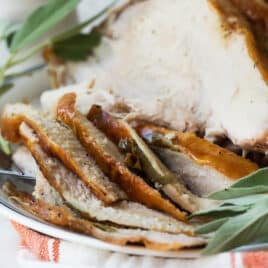
Roasted Turkey Breast
Ingredients
- 1 (6-7 pound) bone-in whole turkey breast trimmed (see note 1)
- 1/4 cup kosher salt (see note 2)
- 1 tablespoons baking powder (see note 3)
- 2 tablespoons butter melted, plus 2 tablespoons softened
- 6 fresh sage leaves
- Freshly ground black pepper
- 2 tablespoons olive oil
- Gravy for serving
Instructions
To dry-brine the turkey breast (see note 2):
- Set turkey breast on a rack set over a rimmed baking sheet. Remove any excess fat or pin feathers and pat dry with paper towels.
- In a small bowl, add kosher salt and baking powder and stir to combine. Sprinkle the salt mixture over the breast. Coat well, stopping before a crust forms (you may not need all of the salt mixture).
- Refrigerate, uncovered, for 12 to 24 hours (or loosely cover and refrigerate for up to 3 days).
- Remove the turkey breast from the refrigerator and let sit at room temperature 1 hour prior to roasting.
To roast the turkey breast:
- Adjust an oven rack to the lower third position and preheat oven to 425 degrees. In a small bowl, stir together the melted butter and olive oil and set aside for basting.
- Using paper towels, dry the turkey breast. Gently slide your fingers between the skin and the breast of the turkey to loosen the skin. Spread 1 tablespoon of the softened butter between the breast and the skin.
- Begin testing for doneness after 2 hours. A thermometer inserted into the thickest part of the breast should reach 165 degrees, and the juices should run clear. Transfer the turkey breast to the carving board and tent with aluminum foil and allow to rest for 30 minutes.
To carve the turkey breast:
- Place turkey breast on the cutting board and slice the breast meat on an angle. Arrange the slices on a serving platter and pass the gravy separately.
Notes
- Bone-in whole turkey breast: Look for a turkey breast with the words “no salt added” on the label. The best (and safest) way to thaw a frozen turkey breast is slowly in the refrigerator over the course of several days (about 2 days for a 7-pound turkey). Never thaw a turkey using warm or hot water, in the microwave, or at room temperature; all of these methods may let bacteria grow before the turkey is thawed.
- Kosher salt: Used for dry-brining (aka pre-salting). The salt draws out the extra moisture in the turkey, forms a salt solution on the outer layer of the bird, and is then reabsorbed back into the meat to season it. For a wet-brine recipe, see my post on how to brine a turkey. Don’t substitute standard table salt for the Kosher salt because it’s much finer and tastes much saltier.
- Baking powder: Just like you might remember from my Baked Buffalo Wings recipe, I call for sprinkling the poultry’s skin with baking powder before roasting. This pantry staple dries out the outer layer of the turkey breast resulting in delightfully crispy skin.
- Yield: My Roasted Turkey Breast recipe is designed to feature a 7-pound bird which will feed about 6 people (about 1 ½ cups turkey per person or 9 cups total). Scale up or down as desired to accommodate your group size and interest in leftovers.
- Storage: Transfer extra carved Roasted Turkey Breast to an airtight container and refrigerate for up to 4 days.
Nutrition
Meggan Hill is a classically-trained chef and professional writer. Her meticulously-tested recipes and detailed tutorials bring confidence and success to home cooks everywhere. Meggan has been featured on NPR, HuffPost, FoxNews, LA Times, and more.
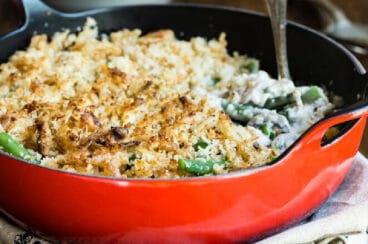
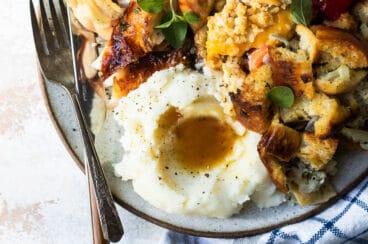
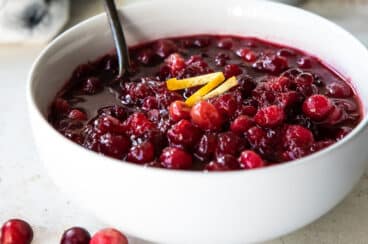
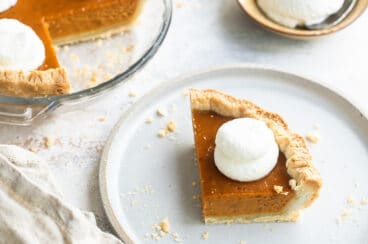
Hi Meggan. If you cook the turkey breast side down, you will never cook it any other way!! The juices run down into the breast and make it extra juicy!!
I notice that although the recipe is for a turkey Breast it states it is done when the thigh is at a temperature Is the thigh attached to a breast
Hi Barbara, thanks for pointing that out. I’ll fix it right now. Take care! – Meggan